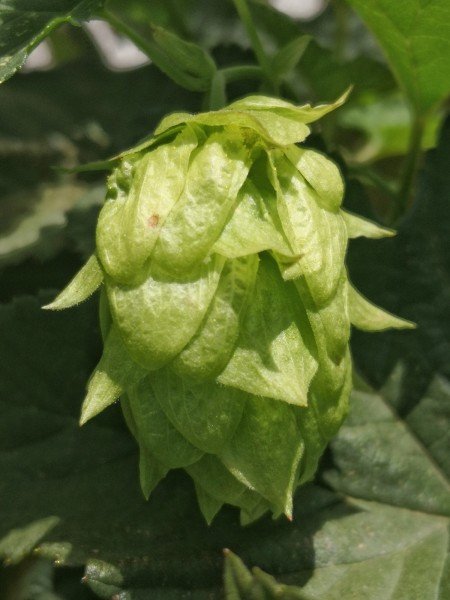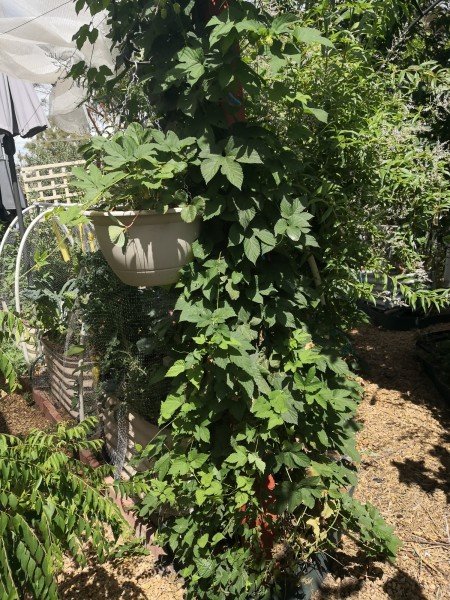Garden Herbs - Hops (Humulus lupulus)
Hi herb enthusiasts. Ages ago, I started posting about various herbs that we have in our garden. They're common enough herbs and grow easily - nothing too difficult to grow and use at all. For various reasons, I stopped posting those but now start again. Every Monday (Oz time) I'll be putting up a new herb for your enjoyment and elucidation (I love that word!) her on the Herbalhive.
You can find earlier posts by going back in my blog and taking a look. I covered Aloe to Honeysuckle back then and now, we reboot with Hops.

Common names: Hops
Taxonomic name: Humulus lupulus
Family: Cannabaceae
Uses: Food, flavouring beer, sleeplessness
Area of origin: Europe, Western Asia, North America
Warnings: Can cause contact dermatitis in susceptible people.
Hops is an interesting plant. It’s not a ‘vine’, it’s a ‘bine’. It’s a bine because of the hairs that allow the plant to climb.
They are very vigorous plants, in season (Hops die back in Winter) and can climb very, very quickly – up to 10 metres in height. Ours seems happy to settle in at around 2 metres.
In a small garden, you will have to be vigilant. The Hops rhizome sends out runners which pop up close to the main plant and the number of shoots waving around the upright that it grows on would make a squid envious.This is good because we eat the young shoots as a green vegetable. The part that we use herbally is the female flower or seed cone.

The dried flowers can be used to make a rather bitter tea or used as stuffing inside a pillow. In both cases, the oils will help you to relax and drift off to sleep. When you make the tea, use a tablespoon of dried cones and keep the cup covered until it cools down so that the volatile, healing oils don’t escape.
Hops tea is best drunk before bedtime to ensure a good night's rest but it can be drunk throughout the day to easy stress. That will contribute to a restful night too.







HUGE fan of growing hops, though it DOES tend to take over!!! I just pulled out three rather vigourous vines. I love hops in tea, though it does need sweetening with chamomile. One of the only things that can settle down a migraine for me!
It's amazing for migraines! I thought I'd posted about it before but I cant find it in my feed. Anyway, it's all good - someone might read this who didn't read the other one and benefit from it!
Your content has been voted as a part of Encouragement program. Keep up the good work!
Use Ecency daily to boost your growth on platform!
Support Ecency
Vote for new Proposal
Delegate HP and earn more
Thanks! I approved the proposal too!
I'll have to get some from you one day. If love to get a frame over the bottom section on the back. These should give good shade in summer, then open up in winter.
@tipu curate
Upvoted 👌 (Mana: 56/76) Liquid rewards.
That's interesting about "bine". I've never grown them. But I think @riverflows does and I know @farm-mom does.
I know @riverflows grows them